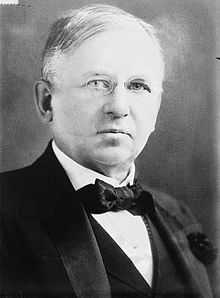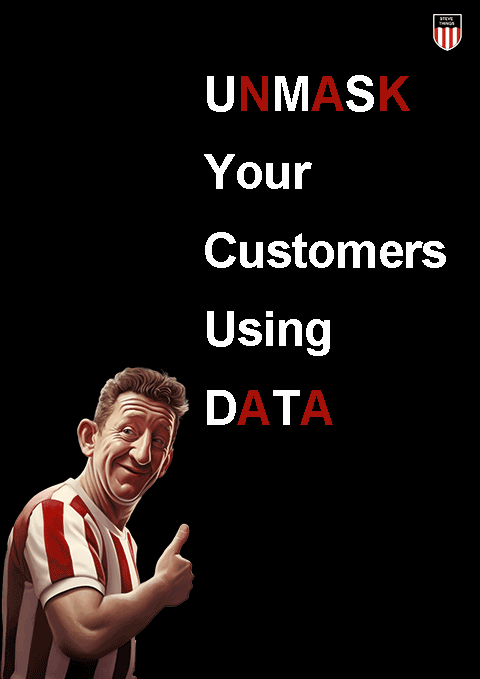As businesses strive to stay ahead of the competition, customer data is becoming increasingly valuable. With the right customer data platform, businesses can unlock valuable insights into their customers and gain an edge over their rivals. But which use cases are the most effective? In this article, we'll explore the top customer data platform use cases and how you can take advantage of them for your business.
What Is A Data Use Case (DUC)?
Picture this: you're trying to get a handle on your customer data, but it's scattered all over the place. You need to make sense of it, and quickly. That's where data use cases (DUCs) come in.
DUCs are a way of organising data that helps you prioritise how your business gets something out from the data you have created in your CDP. DUCs themselves are simply ideas that are prioritised based on the possibilities the business has to act on the outcomes the data use case offers.
They can among other things allow for an easy-to-understand view of the customer journey, from their first interaction with your business to their continued engagement with it. By knowing how customers interact with your products or services, you can better tailor them to their needs and interests.
DUCs should be used to inform decision-making across departments – from marketing and sales to development operations and customer service. The cases are used to drive actions from the data your business collects, are used to prioritise what to do next and are typically managed centrally so all operations can see and benefit from them.
DUCs are like a compass for your business, they guide you on what the most efficient uses of your time are whilst all the time pointing you in the right direction. One of the most important ways a CDP helps a business is one of the most important data use cases of all, creating a single view of the customer.
Creating A Single Customer View
Creating a single customer view (or single source of truth) is essential for any business that wants to understand their customers and deliver personalised experiences. By leveraging the single customer viw use case, businesses can capture the entire customer journey – from initial contact to ongoing engagement. This helps unify customer data across departments and provides an overall picture of customer behaviour and trends.
By knowing what customers are doing, thinking, and feeling, businesses can tailor their products or services to better meet their needs and interests. Additionally, businesses can use the data this use case produces to create targeted campaigns that are more likely to drive sales and improve customer loyalty. This is especially important in today's competitive landscape, where standing out from the crowd is key.
A single customer view also provide valuable insights into how customers interact with your business, allowing you to make informed decisions about how best to serve them. With this knowledge, you can develop strategies that will help you achieve better results and make your business stand out from the rest. And by creating a single customer view, you can ensure that all departments have access to the same data so everyone is on the same page when it comes to serving customers.
With this use case at your disposal, you're well on your way to creating personalised experiences that will keep customers coming back for more.

Creating Personalised Experiences
Creating personalised experiences for customers is a key part of standing out from the competition. You can access customer data to gain insights into their behaviour, preferences, and interests. This allows you to create strategies that are tailored to each individual customer, so you can deliver unique experiences that drive sales and loyalty.
With these insights in hand, you can craft targeted campaigns that are more likely to resonate with customers. You can also use personalisation to create segments of customers based on different criteria – such as age, location, or purchase history – so you can send them tailored messages or offers that are more likely to convert.
By building personalised experiences for customers, you're taking a proactive approach that will help you stay ahead of the curve and ensure long-term success.
Whilst the benefits of personalisation are great the use case itself might require multiple data sources which may be expensive, may require testing tools be implemented, combine multiple marcom tools or perhaps need serious resources allocated to make it happen.
Audience Targeting For Paid Advertising Campaigns
Leveraging the power of customer data platforms (to create targeted campaigns) is a game-changer for businesses. With this DUC, the end game is to learn more about your customers and craft tailored messages that will resonate with them. This allows you to take an advanced approach to audience targeting for paid advertising campaigns, helping you reach the right people at the right time with the right message.
The ability to target specific audiences with precision is invaluable when it comes to digital advertising. You can identify key insights and uncover trends in audience behaviour, so you can quickly hone in on the most relevant segments for each campaign.
Moreover, it allows you to monitor performance metrics in real-time and adjust your approach accordingly – giving you greater control over your campaigns and allowing you to achieve better results from your budget. Seamlessly connecting online channels with offline experiences is the natural next step for any business looking to get ahead of its competitors.
This all sounds fantastic, however you will need your CDP feeding into a Data warehouse with reverse ETL capabilities to do on the fly campaigns with your customers or apps which do that out of the box. Not trivial for the average company, so this needs to be weighed up with whether its worth the impact it makes to your business.
Incremental Marketing Use Case
Your business makes money because of the advertising and the sales they drive. However a massive chunk of the spending customers do happens when it is outside your control. This is what's called incremental marketing. It's about working out how much your paid activities are really worth.

Half my advertising spend is wasted; the trouble is, I don’t know which half.
Some studies show that 70% of the sales that happen were going to happen anyway. Meaning optimising the marketing spend should be tied into knowing the value of incremental marketing.
Developing the use case will mean using control groups of people who never see any of your ads, something a CDP is extremely useful for.
Imagine you can be sure you have never shown an online marketing advert to a group of your customers and then you have another group that are shown everything. You can literally then answer John Wannamaker's question. This then allows you to go to the CFO and say if you give me €1M I will get you an extra €XXM on top of what we already would have gotten. It's an extremely high impact Data use case.
However in order to do it you will need to understand who is in your control groups, measure the impact over a longer term and understand all of the branding implications of the case. Again not trivial.
CDPs As A Data Source For Other Marketing Systems
As mentioned earlier, CDPs provide a single source of truth for all customer data – making it easier to sync up with other systems and get even more value from the data.
This makes CDPs the perfect foundation for creating powerful marketing experiences. With a CDP in place, businesses can use their existing data to create targeted campaigns that engage customers on a personal level through integrations that the CDP may have with other marketing tools. They can easily share customer information with other systems, like email marketing platforms or analytics tools, allowing them to better understand customer behaviour and make data-driven decisions.
The possibilities are virtually endless when it comes to using CDPs as a source of data for other marketing systems – giving businesses unparalleled insight into their audiences and allowing them to predict what they need to create to make highly effective campaigns that reach the right people at the right time.
That said the more platforms used means more complexity, more stakeholders and more expense most likely. So have these things been taken into account when deciding if you're going to go forward?
Enhancing Customer Support
Have you ever been frustrated with customer service? Long wait times, unclear answers, and a general lack of understanding can all lead to an unenjoyable experience. But with CDPs, businesses can take their customer support to the next level – helping them create better experiences and build stronger relationships with their customers.
By combining data from various sources, CDPs allow businesses to gain insights into each individual customer’s unique needs – enabling them to provide personalised support that caters to those needs. This helps companies cut down on wait times and deliver more accurate responses faster, improving customer satisfaction and reducing the number of negative reviews. What’s more, the technology also allows businesses to automate certain processes like ticket routing and resolution tracking – streamlining their operations and freeing up staff time for other tasks.
CDPs are also invaluable in terms of gathering feedback from customers. With access to real-time data, companies can quickly identify areas where they need improvement, allowing them to tailor their products or services accordingly. Additionally, this technology makes it easier for companies to understand how customers use their products or services – giving them greater insight into what works best and how they can continue innovating in the future.
By leveraging this technology, companies can ensure they’re always delivering the best possible service for their customers – creating long-term relationships that keep them coming back again and again.
Again like every other use case the more platforms (survey tools, chatbots etc) that your CDP utilises, means the more difficult the use case becomes to implement and the more expensive it is overall for the business. These factors need to be understood before you start trying to leverage the technology.
Optimising Customer Journeys
A great customer experience isn’t just about providing good service – it also involves creating a seamless journey from start to finish. That’s where CDPs come in. By combining data from various sources, they allow businesses to gain insights into each customer’s particular needs, helping them create personalised experiences that keep customers engaged.
For instance, CDPs can be used to identify high-value customers and provide them with targeted offers and discounts based on their interests and purchase history. This helps businesses increase conversions and loyalty while generating more revenue. Additionally, the technology can also be used to monitor customers’ behaviour over time – offering insights into how they interact with different products or services and allowing companies to optimise their offerings accordingly.
Data collected while the user is navigating an app or a website could also trigger ads, A/B tests or push messages to help the user on their way to conversion.
While the use case is one which is very useful to the business, they again need to ensure the impact outweighs the cost in time and expense of the tools used (such as push messaging, email, A/B testing or ETL).
Ready to take things one step further? Next up, let's explore how CDPs can help enrich CRM and automation tools through reverse ETL!
Enrich CRM And Automation Tools Through Reverse ETL
To take customer experience to the next level, businesses need to go beyond optimising journeys and focus on enriching their CRM and automation tools. This is where reverse ETL comes in – a powerful technique that allows companies to extract data from multiple sources, merge it together in their data warehouse, and then upload it to different tools using the CDP.
The result? Customer data that can be used to create more detailed profiles in marketing tools like Facebook, TikTok or CRM systems like Hubspot. This helps businesses identify opportunities for cross-sells or up-sells, allowing them to offer tailored solutions that meet each customer’s unique needs.
Reverse ETL also enables companies to automate processes such as onboarding and segmentation – freeing up time and resources for more strategic tasks. So for instance a segment could be setup in A/B testing tools that mimics what your best customers look like versus what your weakest customers look like. This would allow you to send different versions of your app or website to different people depending on what your data says will convert best.
Reverse ETL provides businesses with an invaluable tool for unlocking the potential of their CDPs – helping them gain a deeper understanding of their customers while creating more effective marketing strategies. With this technology in hand, companies can deliver better experiences that keep customers coming back for more – driving greater revenue in the process.
While it's valuable, it's also not trivial to implement. You need someone managing a data warehouse. Someone managing the connections between tools, someone ensuring data quality and much more. It's all about the balance of the business need versus the impact to the business.
Now let's explore how CDPs can help improve cross-selling and upselling with the help of the last DUC.
Improving Cross And Up-Selling
Cross-selling and up-selling are vital for businesses looking to increase their customer lifetime value. With the help of a CDP, companies can easily identify opportunities for cross and up-selling across their customer base. By leveraging predictive analytics, they can create tailored offers to the right customers at the right time – resulting in higher conversion rates and improved revenue.
To get started, businesses can use reverse ETL to link customer data from different sources – such as sales systems or marketing databases – into a single platform or data warehouse. This allows them to gain a more comprehensive understanding of each customer’s needs and preferences, enabling them to offer products or services that are most likely to appeal.
What’s more, businesses can also use CDPs to segment their customers into various groups based on their behaviour or demographics. This helps them create targeted campaigns that optimise reach while avoiding wasting resources on unnecessary promotions. In addition, CDPs allow companies to track how effective their cross-sell and upsell efforts are in real time – helping them refine their strategies over time for maximum results.
By utilising the power of CDPs, businesses have access to powerful insights that can improve their approach to cross and up-selling - allowing them to drive greater engagement and increased revenues in the process.
Final words
I’ve seen how data use cases can be applied to real-life situations in various industries. From creating a single customer view to connecting online and offline channels, a data use case can help you make the most of your customer data.
Without developing the use cases in a systematic way and prioritising them correctly there is less chance you'll get value from the CDP you have invested in.
When used correctly, data use cases can help you get the most out of your CDP, driving up the business potential by giving you insights into your customers’ behaviours and preferences so that you can provide them with the best possible experience.
So, if you want to make the most of your customer data in your CDP then start designing, prioritising and actively using DUCs.

